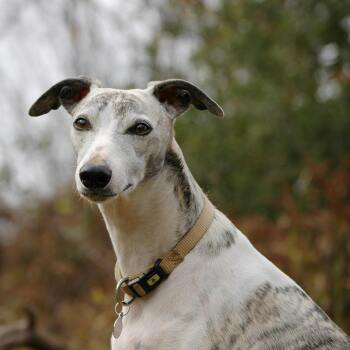Greyhounds

Greyhound: The Speedster with a Soft Side
Graceful, gentle, and surprisingly low-key, the Greyhound is the perfect example of “don’t judge a dog by its top speed.” Though these athletic hounds were built for racing, you’re more likely to find them snoozing on the couch than sprinting across your backyard.
Why Greyhounds Make Such Great Companions
There’s a lot to love about life with a Greyhound. These quiet, adaptable dogs are a great fit for almost any living situation—whether it’s a city apartment or a home with a yard. They rarely bark, they’re easygoing indoors, and they tend to be wonderfully polite around people and pets once they feel comfortable.
Despite their athletic reputation, Greyhounds aren’t high-maintenance when it comes to exercise. A couple of brisk walks and a little playtime are usually enough to keep them content. And when it comes to personality? Sweet, sensitive, and often goofy in the best way.
A Few Things to Keep in Mind
While they’re a joy to live with, Greyhounds do have some quirks. They can be a bit shy around strangers, and their strong prey drive means they might see smaller animals as something to chase. Early socialization helps, but supervision is always smart.
They’re also known for their sensitivity—both emotional and physical. Some Greyhounds may get anxious if left alone too long, and their thin coats mean they feel the cold more than most dogs. Don’t be surprised if your Greyhound needs a cozy sweater in the winter!
And while they’re generally quick to learn, house-training can take some patience—especially if you’re adopting a retired racer.
From Ancient Royalty to Modern Couch Potato
Greyhounds have been by our side for centuries—literally. They date back to ancient Egypt and have long been admired for their speed, elegance, and loyal temperament. Originally bred for hunting fast-moving prey, they eventually became racing stars. But today? These so-called "40-mph couch potatoes" are content to trade the track for a soft bed and a loving home.
Greyhounds typically live between 10–14 years and do best in calm, consistent households that value routine, gentle leadership, and a little extra snuggle time.
Common Health Concerns in Greyhounds
- Bloat (GDV)— Like many deep-chested breeds, Greyhounds are at risk for bloat—a dangerous condition where the stomach twists and traps gas. If your pup is retching, pacing, or showing signs of abdominal pain, it’s a true emergency. Preventive surgery may be an option for at-risk dogs.
- Bleeding Disorders— Greyhounds are prone to clotting issues such as Von Willebrand’s Disease, which may not show symptoms until after an injury or surgery. Pre-op bloodwork helps us catch risks before they become problems.
- Bone and Joint Problems— Arthritis, hip dysplasia, and back issues like Intervertebral Disc Disease (IVDD) can affect Greyhounds, particularly as they age. Rapid growth in puppies can lead to joint conditions like osteochondritis dissecans (OCD). Keep your pup at a healthy weight, and stick to large-breed puppy diets during growth phases.
- Neurologic Conditions— Seizures can occur in Greyhounds due to idiopathic epilepsy, typically showing up between 6 months and 3 years of age. Regular monitoring and lifelong medications often help manage this condition well.
- Inflammatory Bowel Disease (IBD)— Chronic vomiting or diarrhea may be signs of IBD, a condition that affects the intestinal lining. Diagnosis may involve biopsies, but once identified, this condition is manageable with a consistent diet and medication.
- Heart and Blood Pressure Issues— Greyhounds are more prone to hypertension and heart-related conditions like high blood pressure and murmurs. Regular checkups, blood pressure monitoring, and heart screenings can help catch problems early.
- Eye Problems— Greyhounds may develop cataracts, distichiasis (extra eyelashes), pannus (UV-related eye damage), or other issues. Routine eye exams are essential, especially as your dog ages.
- Dental Abnormalities— This breed is known for dental quirks like extra teeth or misalignment.
Regular cleanings and occasional extractions or orthodontic treatments may be needed to keep that smile healthy. - Megaesophagus— Some Greyhounds have difficulty swallowing due to poor esophageal function, causing regurgitation. A special feeding setup and dietary changes can help manage this lifelong condition.
- Allergies and Skin Conditions— From itchy skin (atopy) to pododermatitis (paw infections), Greyhounds are no strangers to allergic reactions. Management often includes medications, diet changes, and topical care.
- Kidney Disease— Genetic conditions like glomerulonephropathy can affect Greyhound kidney function. Routine urine tests help detect early protein loss and allow us to intervene before symptoms progress.
- Bald Thigh Syndrome— A cosmetic condition seen in some Greyhounds, this hair loss is often harmless and non-itchy but should be monitored to rule out other causes like thyroid issues or parasites.
Ready to Learn More? We’re Here to Help!


